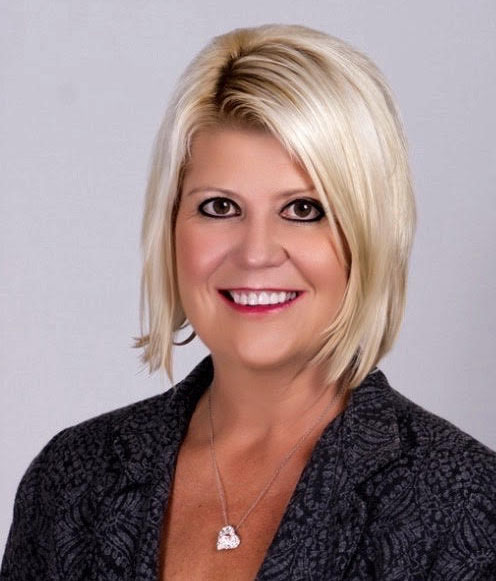Sponsored Article

By Lorie Lippiatt, OD
July 24, 2019
Each morning, there are three things I look at: the weather, my news feed and my EDGEPro metrics.
Metrics have become a way of life. When I check my EDGEPro dashboard, I first look at the business overview. I look at total revenue for the period, then drill down to clinic revenue and optical revenue. Other metrics that I’m keen to know include average revenue per exam, clinic revenue per exam and optical revenue per exam. Finally, I look at the “opportunities” tab, which quickly shows me where our greatest opportunities lie in maximizing profitability.
That critical information gives me an immediate snapshot of how we’re doing, and it steers the steps we take in managing and growing our practice.
Grow the practice with a focus on metrics
I founded Salem Eyecare Center 30 years ago, one year following my graduation from optometry school. I was joined six years later by Carmela Abraham, OD, who added a pediatrics specialty to the practice. We also have branched out into behavioral optometry and sports vision, while maintaining a strong medically focused practice.
Practice Profile
Salem Eyecare Center, Inc.
Salem, Ohio
Years in practice: 30
FTE ODs : 2
Staff : 7
Exams/year : 3,400
Revenue per exam: $380–$425
Working with EDGEPro: 7 years
Specialties: Pediatrics, geriatrics, behavioral optometry, sports vision
It has been a pleasure and honor to serve a community of 12,000 residents in the town where I grew up. I have seen generations of patients, many of them friends and neighbors.
Our two-OD practice has grown over three decades, and we are supported by a staff of seven. This includes two opticians, two technicians, two front office managers and a general office administrator.
And that is where technology is on our side in tracking our performance. At our practice, our entire staff is engaged in it. That is by design, and it has improved our overall performance. We are transparent in our staff meetings and share metrics with the staff in order to set goals for any metric where we wish to see an improvement. By challenging ourselves as a team, discussing how we can improve together and working toward a common goal, we have grown as a team, where everyone benefits, including the patient.
Relate metrics to practice performance and challenges
In our staff meetings, we relate the metrics we track to cost and profit. For example, we recently ran the numbers on cancellations and found we had had 10 unfilled exam slots from cancellations over the past month.
“Well, what does that mean?” I asked.
“It means we missed out on $4,000 last month,” said one staffer.
As our staff well knows, from our metrics-based discussions, our practice generates about $400 from each comprehensive exam. (This compares with the national average of $377, according to EDGEPro.)
We discussed this metric in real dollars/real potential revenue, so the entire staff understood the impact of empty exam slots. Then we drew up a plan of action so we surely would not lose $4,000 each month or $48,000 per year.
In addition to metrics, we also rely on services such as EyecarePro for online appointment scheduling and 4Patient Care to help manage our patient recall.
Sort out the metrics
Our dashboard allows us to break out various aspects and look at profitability. We look at optical revenues vs. clinical revenues. We’re about 50/50, indicating that we do more medical model than most practices that run 60/40 in favor of optical. That’s in line with our philosophy of offering medical eyecare services.
Set goals, motivate staff
The EDGEPro is more than just a sales management tool; it is a staff motivation tool. We do a full performance analysis on a quarterly basis, and we offer incentives based on meeting or exceeding team goals and individual goals. We also employ gamefication to increase engagement and make it fun.
Improving metrics isn’t always easy, but we continually come up with campaigns to move the needle in various areas. One campaign was to improve patient awareness of the hazards of blue light and the increase acceptance of lenses that block it. Patients generally know or hear little about this, so to spark patient inquiries about it we brought awareness to blue light starting in our reception area with signage, our reception media player, and actually placed a blue fish in a fishbowl on the check in desk. The emphasis on “blue” allowed us to increase our blue-blocking lenses by 30 percent.
Another challenging campaign was to increase acceptance of daily contact lenses. To succeed with any change, you really need to know your patient base. We serve a conservative, industrial-based community. For many patients, trying contact lenses is a major mindset change, even more so when we encourage them to try a new format that is more costly, but which has comfort and health, convenience and benefits. But with all team members on board and relaying to patients the same message of “healthier, more consistent vision, and more comfortable,” we are making progress in daily wear.
It’s fun seeing our numbers increase each month on the EdgePro dashboard, in addition to providing a healthier solution for our patients.
We continue to monitor our progress, track change, and zig and zag where we need to in order to keep moving the needle.
 Lorie Lippiatt, OD, is the founder of The Salem Eyecare Center, Inc., in Salem, Ohio. To contact her: llleyedoc@aol.com
Lorie Lippiatt, OD, is the founder of The Salem Eyecare Center, Inc., in Salem, Ohio. To contact her: llleyedoc@aol.com





















